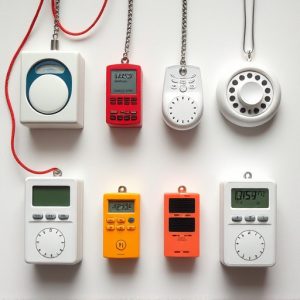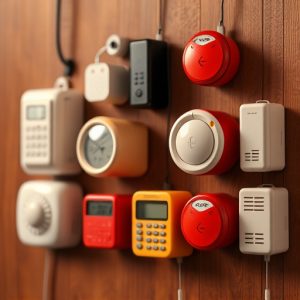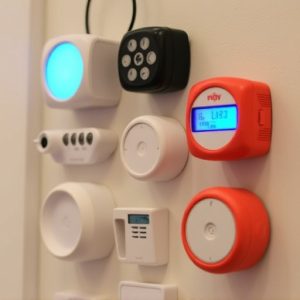Personal Safety Devices: Protecting You in Emergency Situations
Personal alarms are vital emergency tools, offering both wearable and indoor options with features l…….
Personal alarms are vital emergency tools, offering both wearable and indoor options with features like loud sounds, GPS tracking, and silent alerts. When choosing an indoor personal alarm, consider a Personal Alarm Range in Buildings that covers all areas, from open-plan offices to private rooms, addressing challenges posed by building materials and design with adjustable volumes and powerful sound outputs. These devices ensure prompt alerts, enhancing safety for individuals in various environments, including medical emergencies, outdoor activities, and for those living alone.
Personal safety devices are crucial tools for emergency situations, empowering individuals to protect themselves and seek help swiftly. This article explores why these devices are essential, delving into various types of personal alarm systems designed for critical moments. We discuss optimal choices for personal alarm ranges within buildings, ensuring maximum effectiveness during emergencies. Discover real-world applications that highlight the game-changing impact of personal alarms in enhancing safety and enabling swift response times.
- Understanding Personal Safety Devices: Why They Are Essential
- Types of Personal Alarm Devices for Emergency Situations
- Choosing the Right Personal Alarm Range for Buildings
- Effective Use Cases and Real-World Applications of Personal Alarms
Understanding Personal Safety Devices: Why They Are Essential
Personal safety devices are crucial tools for anyone facing emergency situations, especially when you’re alone and need immediate assistance. These devices serve as a powerful means of self-defense and can potentially save lives. One essential tool to consider is a personal alarm, designed to attract attention and deter potential threats. These alarms often come with a wide range of options, including those suitable for use in buildings, where the personal alarm range is an important factor.
In enclosed spaces like offices or homes, a personal alarm’s effectiveness relies on its ability to project sound clearly. Devices designed for such environments typically offer louder, more powerful signals to ensure they’re heard even in bustling settings. This feature is vital for emergency situations where quick response times can make all the difference.
Types of Personal Alarm Devices for Emergency Situations
In emergency situations, personal alarm devices are invaluable tools for drawing attention and signaling distress. These range from compact, wearable devices to those designed specifically for indoor use, such as in buildings or confined spaces. For individuals who may find themselves in perilous or unfamiliar environments, a personal alarm offers a sense of security by providing an easy-to-activate means of communicating their location and need for help.
Wearable alarms are popular choices, offering a range of features like loud sounds, flashing lights, and GPS tracking. Some devices can even send alerts to pre-selected contacts or emergency services. For indoor use, specialized personal alarm systems are designed to complement existing safety measures in buildings. These typically include silent alerts that don’t disrupt others, yet ensure the user’s location is quickly identified by building security or emergency responders. This functionality is particularly crucial in high-rise buildings or areas where external noise could mask traditional alarms.
Choosing the Right Personal Alarm Range for Buildings
When selecting a personal alarm for buildings, understanding the required range is paramount. The ideal Personal Alarm Range in Buildings should cover all potential emergency areas, from spacious open-plan offices to narrow corridors and private rooms. Devices with adjustable volumes and powerful sound outputs ensure maximum reach and effectiveness, especially in large or multi-storey facilities.
Factors like building materials, architectural design, and potential obstructions significantly impact the effective range. Hard surfaces and open spaces may reflect sound, whereas soft barriers like curtains or furniture can absorb it. Choosing a device with a range that considers these variables ensures everyone within the premises can be alerted promptly during an emergency.
Effective Use Cases and Real-World Applications of Personal Alarms
Personal alarms are highly effective tools for personal safety, especially in emergency situations. Their loud and distinctive sounds can attract attention and alert others nearby, providing a crucial window of time for help to arrive. In indoor settings, like buildings or homes, these devices play a significant role in ensuring individual safety. The Personal Alarm Range in Buildings is an essential consideration; alarms should be easy to activate and have a sufficient range to cover common spaces, corridors, and even remote areas within the structure. This ensures that anyone facing an emergency can use the alarm without difficulty.
Real-world applications highlight their utility in various scenarios. For instance, during medical emergencies, personal alarms can alert nearby staff or family members, enabling swift response and assistance. In outdoor activities like hiking or camping, these devices are invaluable for signaling distress signals quickly. They are also beneficial for individuals living alone, offering a sense of security and empowerment to manage unexpected situations effectively.
Personal safety devices, particularly personal alarm systems, play a pivotal role in empowering individuals to protect themselves during emergencies. By understanding different types and considering the optimal Personal Alarm Range in Buildings, we can enhance our safety significantly. These devices have proven their worth in various real-world applications, ensuring that help arrives swiftly when needed most. When choosing a system, it’s crucial to match the coverage area to the building’s layout for maximum effectiveness.


